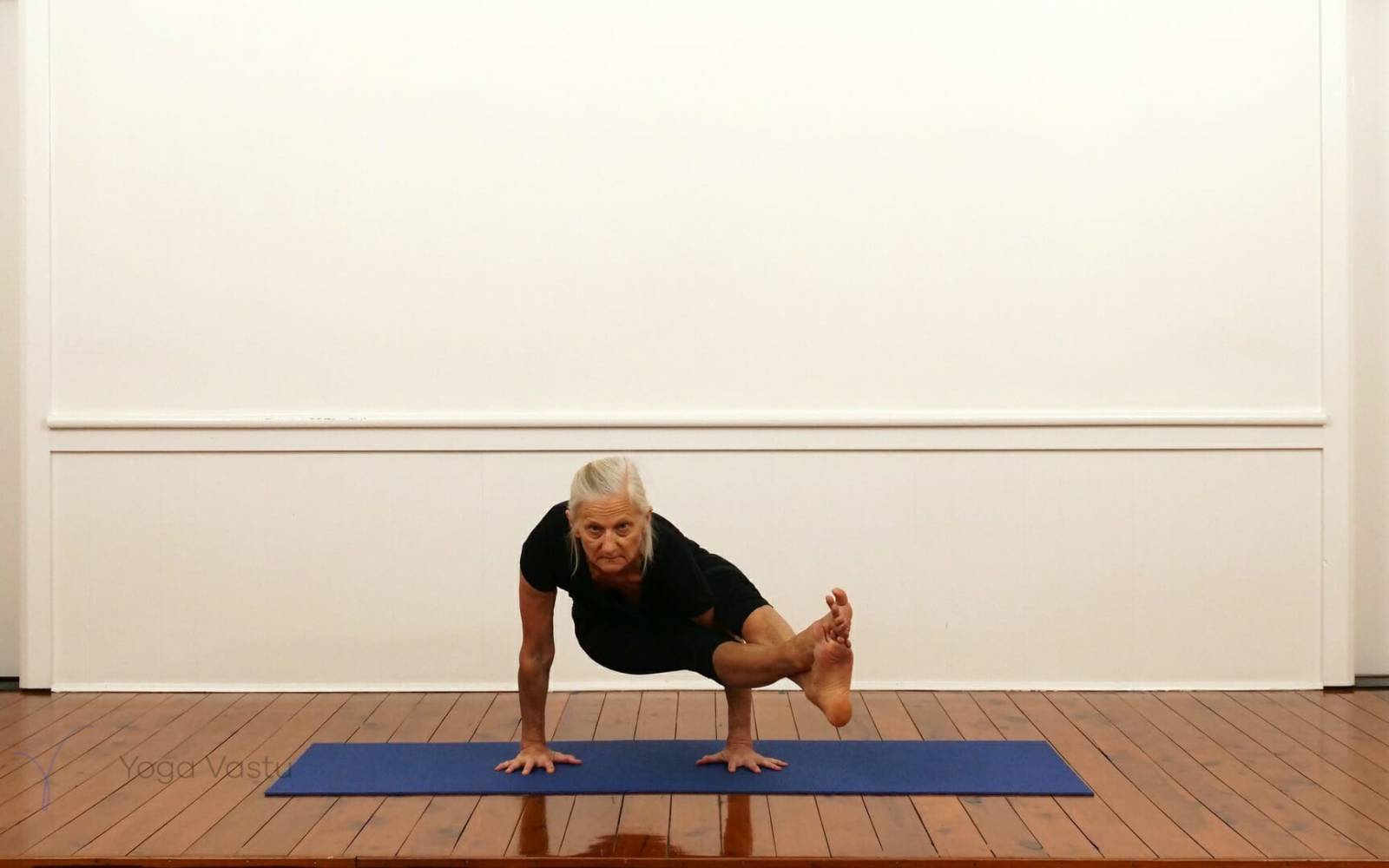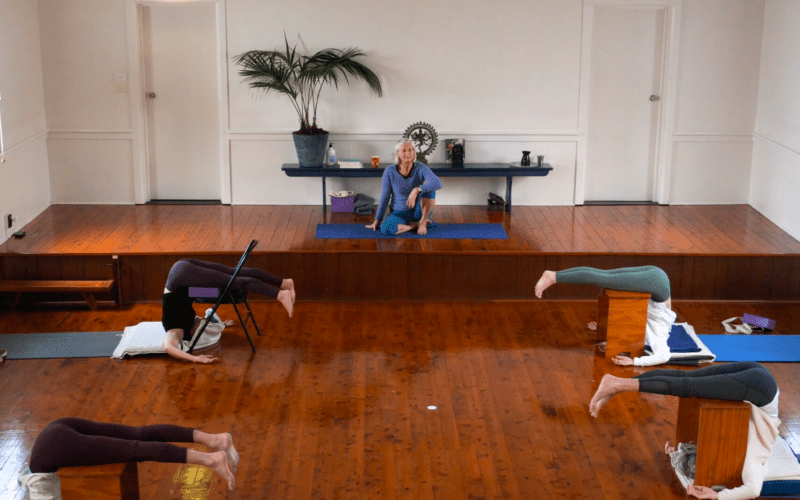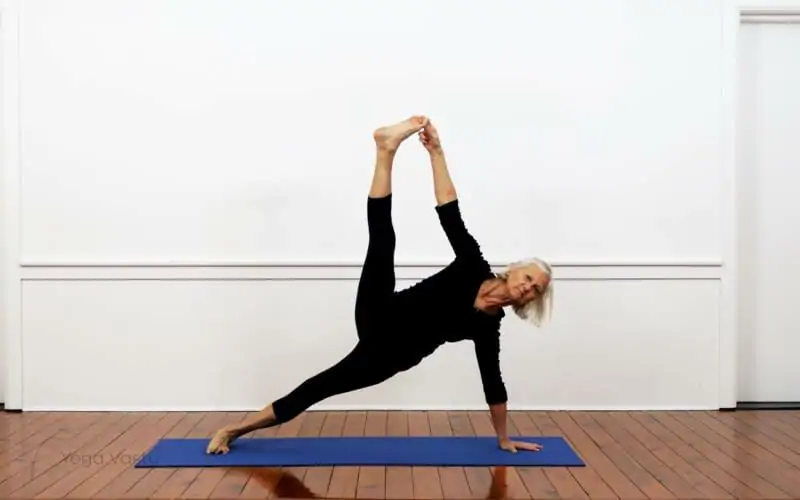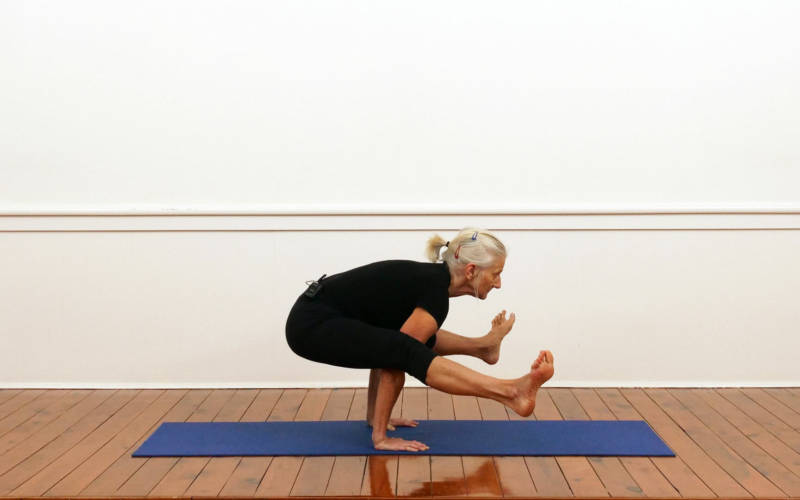How to perform Eight-Angle Pose
Bend your knee placing your foot by your buttock and plant your hand on the inside of the foot. With your hands planted firmly by your hips, lift your legs and take them forward to meet each other, then interlock them. Incorporate a bend in your elbows and, as you inhale, push yourself up into balance. Straighten your legs outward.
What is Asta Vakrasana?
This is one of the more advanced arm balances and should not be attempted without due preparation.
Your wrists need to be accustomed to bearing a considerable amount of weight beforehand and your shoulders have to be capable of retaining an open and activated quality so that you don’t suffer any injuries or reinforce and/or develop bad posture.
Start in a seated position with your knees bent and feet positioned close to your buttocks. One of your hands is planted on the inside of your thigh while the other is positioned on the outside. Then, you extend your legs forward and interlock your feet. Bend your elbows to the side and, after activating and opening up your shoulders, straighten your arms and push yourself forward and up. Maintain the balance to capacity before shifting back down to the floor. While in the pose, keep your legs, arms, and spine straight but buoyant.
When to use Asta Vakrasana?
Seen as this pose requires the student to possess a sufficient amount of wrist strength, shoulder mobility, and a good sense of balance, it should only be attempted after the student has laid all the necessary foundations.
When achieved, however, it goes a long way in further improving balance and in strengthening the arm, shoulder, leg, and abdominal muscles.
You can prepare for Asta Vakrasana by practicing other poses that focus on the muscles involved here. For example, Paschimottasana can improve the flexibility you will need to maintain your back and legs straight at this angle. The Boat Poses can help provide you with the necessary core strength, and various other hand and arm balances and wrist exercises, like Vasisthasana, can prepare your wrists for supporting most of your body weight.




